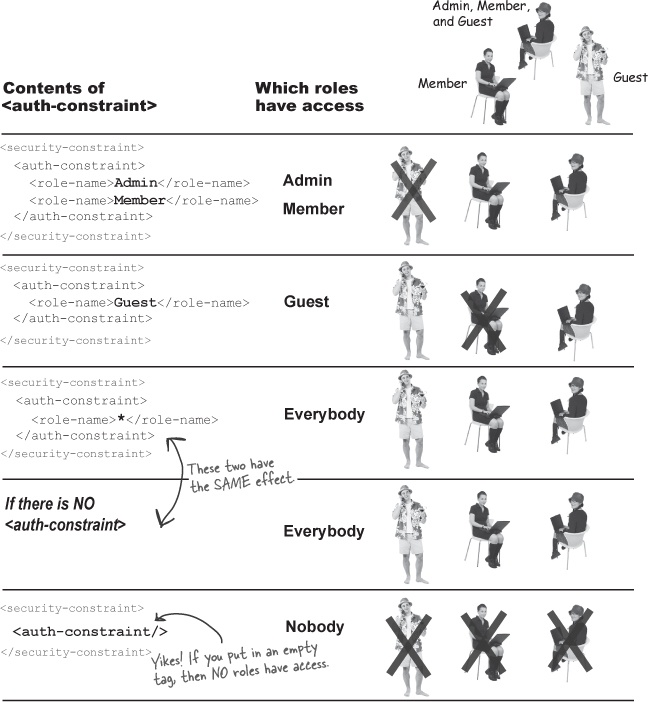The way <auth-constraint> works

Note
NO <auth-constraint> is the opposite of an EMPTY <auth-constraint/>!
Remember this: if you don’t say which roles are constrained, then NO roles are constrained. But once you DO put in an <auth-constraint>, then ONLY the roles explicitly stated are allowed access (unless you use the wildcard “*” for the <role-name>). If you don’t want ANY role to have access, you MUST put in the <auth-constraint/>, but just leave it empty. This tells the Container, “I am explicitly stating the roles allowed and, by the way, there aren’t any!”
Get Head First Servlets and JSP, 2nd Edition now with the O’Reilly learning platform.
O’Reilly members experience books, live events, courses curated by job role, and more from O’Reilly and nearly 200 top publishers.

